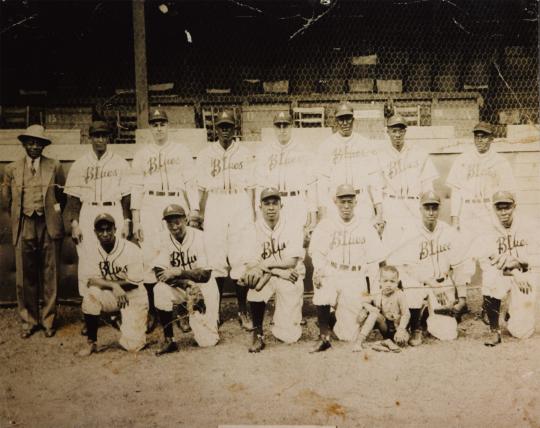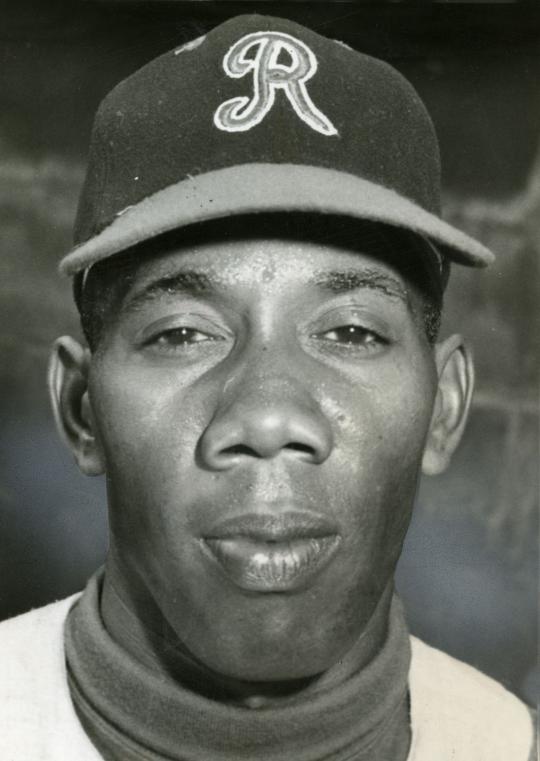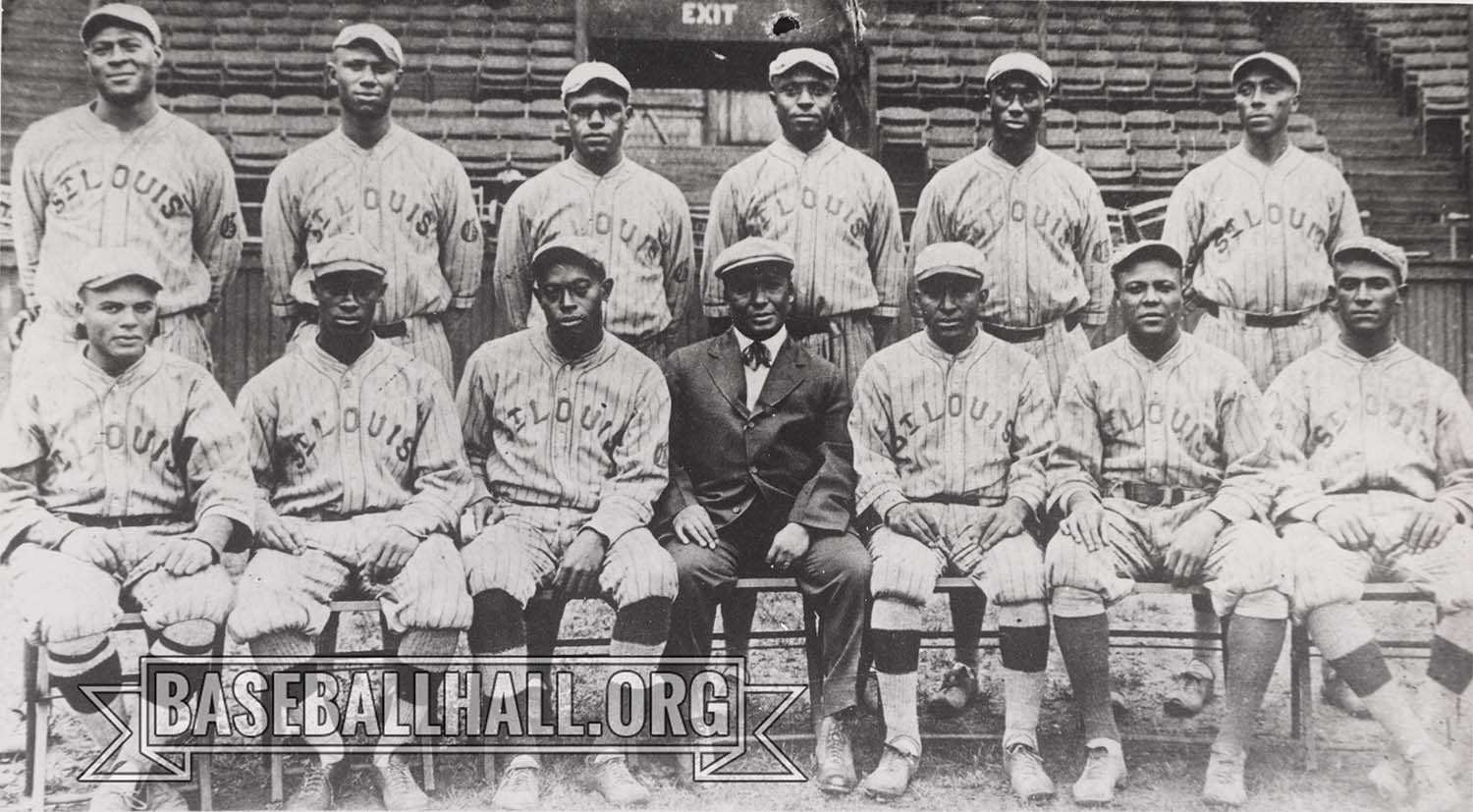- Home
- Our Stories
- #Shortstops: Blues and Baseball
#Shortstops: Blues and Baseball
When most people think of professional baseball in Asheville, N.C., the rich history of its minor league team, the Asheville Tourists, comes to mind.
What they may not know is that Asheville was home to successful Negro League teams such as the Asheville Royal Giants, the Asheville Black Tourists and the Asheville Blues.
Hall of Fame Membership
There is no simpler, and more essential, way to demonstrate your support than to sign on as a Museum Member.
Throughout the 1940s and 1950s, the Blues were one of the best Negro League teams in the Southeastern United States. The team was led by Clarence “C.L.” Moore, a local schoolteacher who previously played for the Asheville Black Tourists as well as the Chicago Union Giants and the Atlantic City Bacharachs. He worked his way up to player-manager and eventually owner of the Black Tourists by the 1944 season.
He renamed the team the Blues because he was “disdainful” of the Black Tourists name that followed a familiar pattern of inserting the word “Black” in front of the local white team’s name and wanted a “simple name.” They played their home games at McCormick Field, where the Blues were the main occupant until 1946, when the minor league Asheville Tourists were reformed.
Playing as an independent club in 1944, the Blues finished the season winning 27 out of 33 reported games against professional and semiprofessional clubs – including a 14-game winning streak. In 1945, the Blues became founding members of the reformed Negro Southern League and finished the season in third place with an 18-14 record.
The year 1946 was their greatest season. The Blues dominated the Negro Southern League, winning both the first and second halves of the season to win the NSL pennant. They won their last 16 games of the season and finished the year with a 48-12 record.
The National Baseball Hall of Fame and Museum has a photo of the 1946 Asheville Blues in its photo archives. Moore is in the front row, first one on the left. Pitchers Vernon Phillips and Frank Flemming, who threw consecutive no-hitters that season in a June 9 double header with Montgomery, are in the back row, third and fourth on the left.
The Blues repeated as league champions in 1947, winning the first half of the season and defeating the second half winners, the New Orleans Creoles, in the playoffs three games to two.
In 1948 the Asheville Blues left the Negro Southern League. After turning down an offer to join the Negro National League, the Blues became founding members of the new Negro American Association, with Moore elected as its first president.
They continued their winning ways, making playoffs that season but losing to the Raleigh Tigers four games to two.
After finishing third in 1949, the Negro American Association disbanded and the Blues became an independent team once again, playing into the middle to late 1950s. Organized Baseball was integrated by then and a number of former Blues players reached both the major and minor leagues, including Bill Greason, who played for the St. Louis Cardinals in 1954 and Jim Pendleton, who played for the Milwaukee Braves, Pittsburgh Pirates, Cincinnati Reds and Houston Colt .45s from 1953-1962.
Matthew Carter was the 2019 curatorial intern in the Hall of Fame’s Frank and Peggy Steele Internship Program for Youth Leadership Development





